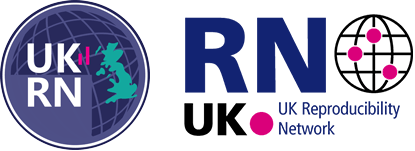A central feature of the UKRN is supporting its grassroots community of over 90 local network leads (LNLs) from 80 UK universities (see list here). One way – among many – the UKRN does this is by hosting an annual retreat over several days. The aim is to strengthen links between LNLs, encourage conversations on current topics, and identify practical ways to overcome challenges LNLs face. I’ve been lucky enough to have attended every retreat so far. I always leave enriched, inspired and reinvigorated, and the most recent retreat was no different. Held over the 3rd and 4th of June at Newcastle University, the retreat fostered reflective discussions about how we define the role of LNLs, what the future holds for the UKRN, and the introduction of the new LNL guidebook. It’s sort of a tradition to blog about what happened so that those who could not attend can still benefit and be included. If you like, you may want to read the blogs from 2021 and 2023. Otherwise, check out what went on this year below!
(Re)Defining the Role of an LNL
One of the key sessions at the retreat delved into the evolving role of LNLs. LNLs cultivate reproducible research practice across institutions, whether through awareness-raising, training, changing policies and procedures, or acting as a vehicle that drives through UKRN initiatives and agenda. What is clear from our conversations is that there is no one size fits all definition that adequately captures the ever changing role played by an LNL. This is a good thing. The strategic objectives for a given LNL will depend on their own skill strengths, interests, and needs of their institution. However, it can also be unhelpful. Attendees recognised that a description of an LNL is useful for onboarding new LNLs and for informing the guiding principles that determine goals set by LNLs. The latest terms of reference help in this regard, but what would be useful would be a guidebook with recommended actions and examples of good practices – more on this later.
Related discussions circled around the many advantages of being an LNL. These will differ from person to person, but the role usually affords LNLs with i) a legitimate status in the eyes of their (especially senior) peers; ii) leadership opportunities; iii) a chance to demonstrate they have informed or guided the practice of their colleagues; iv) in some cases, a means to successfully argue for workloaded time to purse their activities; and v) in my experience, give you clout when guiding policy and procedural changes at your institution. The aim would be to release a document highlighting these advantages to maximise the gains of being an LNL, as well as to facilitate recruiting a successor or more LNLs from within your institution. UKRN central will delineate more on this in good time.
Launching the New LNL Guidebook

As hinted at above, a highlight of the retreat was the introduction of the new LNL guidebook, a step – I think – in the right direction to help define and inform our roles as LNLs. The hope is that this comprehensive guide will serve as an essential resource for current and future LNLs. It’s split into three parts. Part 1 helps define what an LNL is and where they sit in the UKRN infrastructure. Part 2 lists the three broad aims LNLs ought to pursue, with practical advice scaled according to their difficultly in terms of time and effort, from easy, medium, to hard. Part 3 identifies the advantages of being an LNL, and why many LNLs chose to be one. The remainder of the guidebook lists useful hints, tips, and ideas that could be used to help things in the right direction right away. The handbook is designed to empower LNLs with the tools they need to effectively lead their local networks, fostering a culture of reproducibility and integrity in research. A real strength of the guidebook is that it was designed by LNLs, drawing on first-hand experience in their successful (and sometimes not so successful) initiatives to widen the adoption of open research practices and improvements in research culture.
Now, I said that a highlight of the retreat was launching this handbook. This is not because I came up with the idea and led on the project, but because it was wonderful to see an idea come to reality after working with the great team at UKRN central, namely Diane Hird, Will Gawned, and Neil Jacobs alongside the many LNLs that contributed their wealth of expertise, all of which made the guidebook possible.
What next for UKRN?
Open science is far more mainstream and is arguably an established feature in many key areas of the research ecosystem. There is still a long way to go before the UKRN achieves its goal of making open research part of routine research practice, but one has to acknowledge that the UKRN is doing a great job at – well – making itself obsolete.
A significant theme therefore was the future direction of the UKRN. Participants explored strategic initiatives aimed at expanding the network’s reach and impact. This included discussions on potential collaborations with the growing number of 20 or so national Reproducibility Networks across the globe, funding opportunities, and the development of resources to support our growing community. The collective vision shared during the retreat underscored a commitment to sustaining momentum and nurturing an environment where rigorous, reproducible research can thrive. Whatever the future holds for the UKRN, it is clear that the network has established itself as a distinctive entity in an increasingly crowded space. Maintaining this presence is crucial. How this will be achieved is an ongoing conversation, and LNLs will continue to play a vital role in the years to come.
For now, LNLs identify a key strength that should be harnessed: training. The impressive set of training materials developed through the Open Research Programme, alongside support for the self-organising grassroots community of experts, represents a significant asset. Whether this can be leveraged to create a revenue stream remains to be seen, but the potential is certainly there. This focus on training could help sustain and even expand UKRN’s impact in the future. What might be informative in this regard is an Open Research Summer School that I am running at King’s College London between 22nd and 26th July, with support from Olivia Kowalczyk, Alexandra Lautarescu, and the events team (including Hannah Warren and Robin Maginn).
This pilot partly aims to showcase how LNLs can use the train-the-trainer material to put together an attractive and well-attended (I hope!) series of talks and workshops. This could serve as a scalable format that could be run at any university. You can register here.
Final thoughts
You may be interested to know that on the first day we were joined by a local film crew, Heather Luke and Andy Tonner from WANDER. They worked with Diane Hird to interview several LNLs. The footage will be used to create 2 short videos about the value of UKRN to researchers and the wider academic research network, as well as short clips for social media. Heather and Andy also rounded us all up, on a busy bike lane(!) for a group photo. On the second day local photographer John Donoghue captured high quality photos of delegates deep in discussion. These will be used on the website and in wider UKRN comms.
I’ll end the blog with a plea. If you have time next year, try to come to the retreat. The value of the retreat is not the actual programmed material – as good as they are – but rather the free time in-between. Over coffee, or lunch, or a few drinks, you make friends, feel validated in your efforts, and build your confidence in your endeavors to promote a better research culture.


